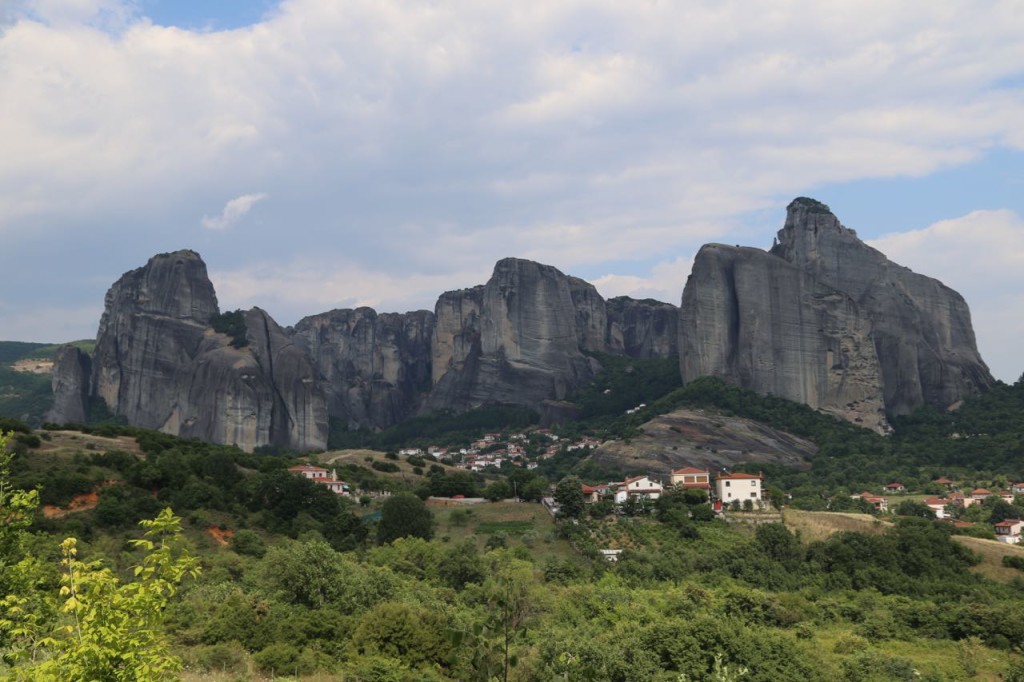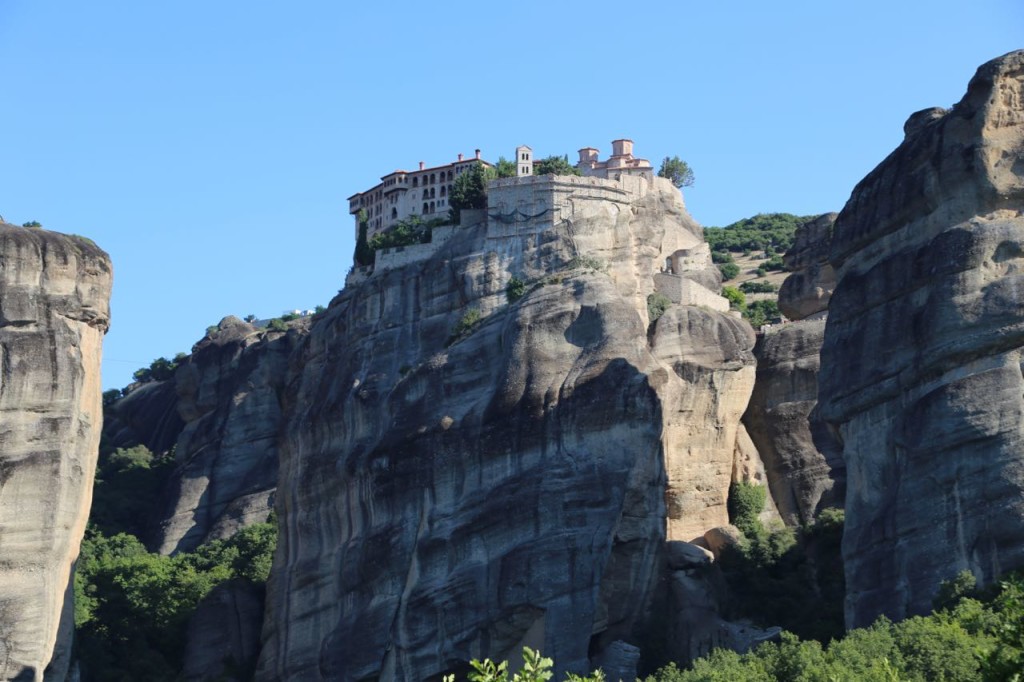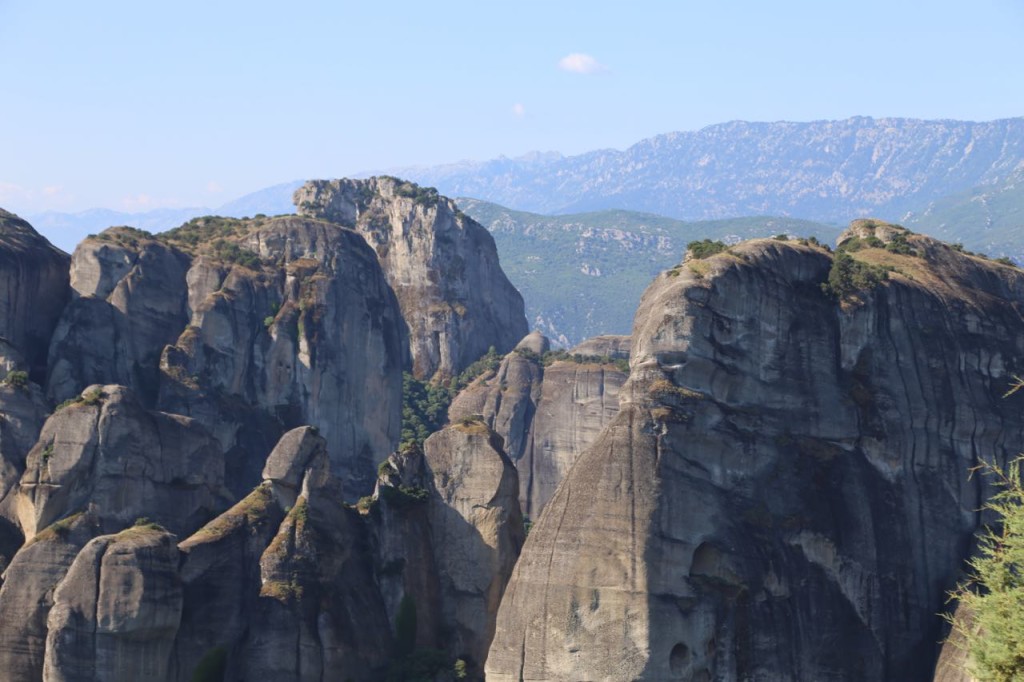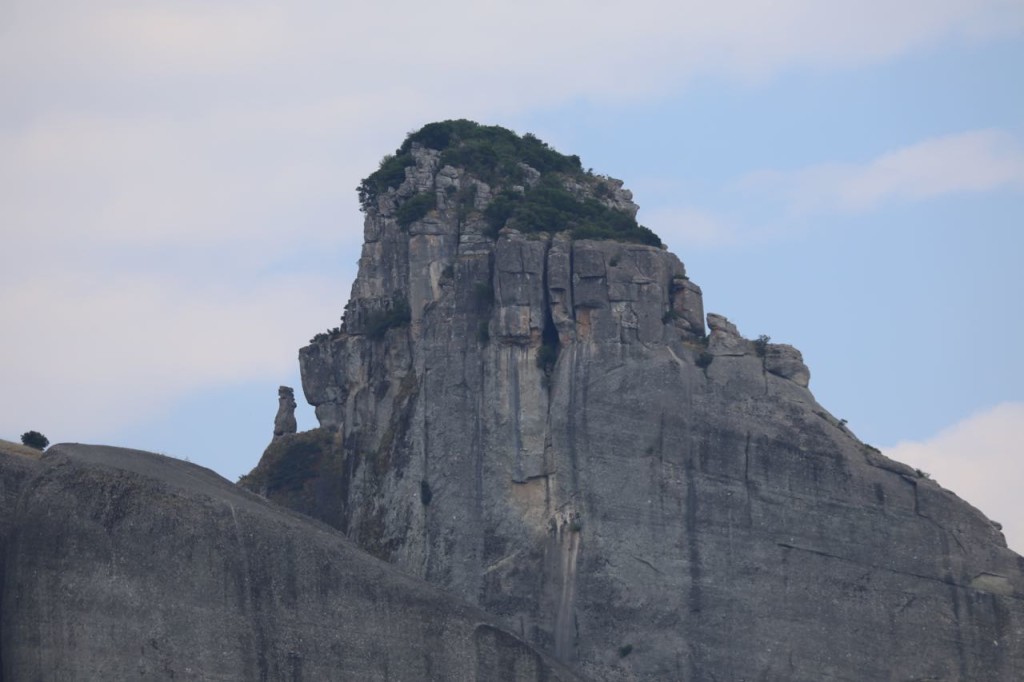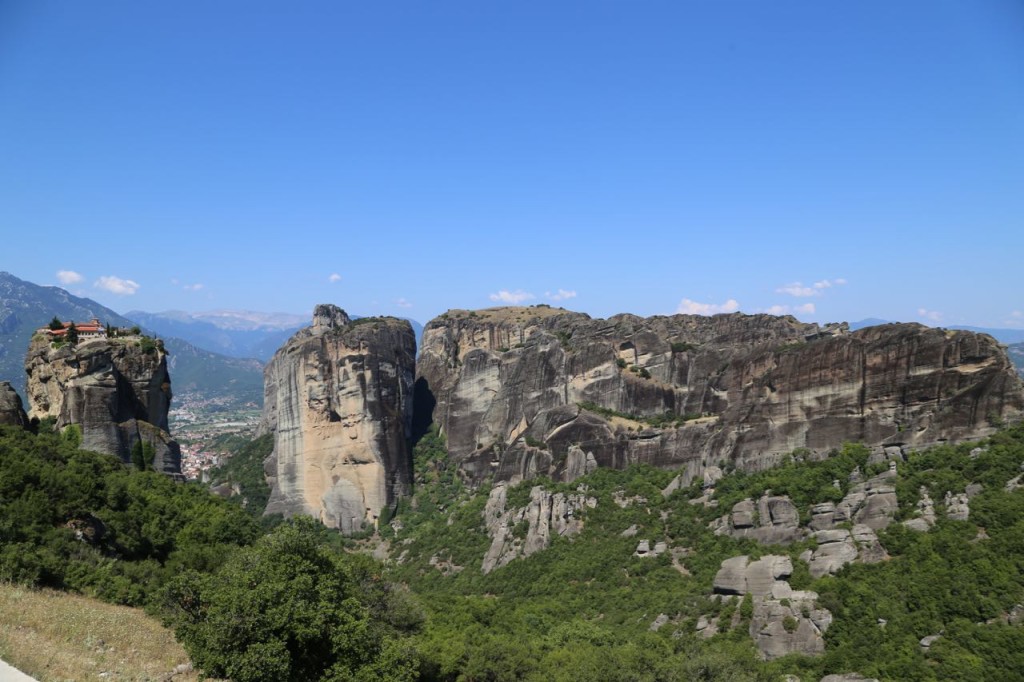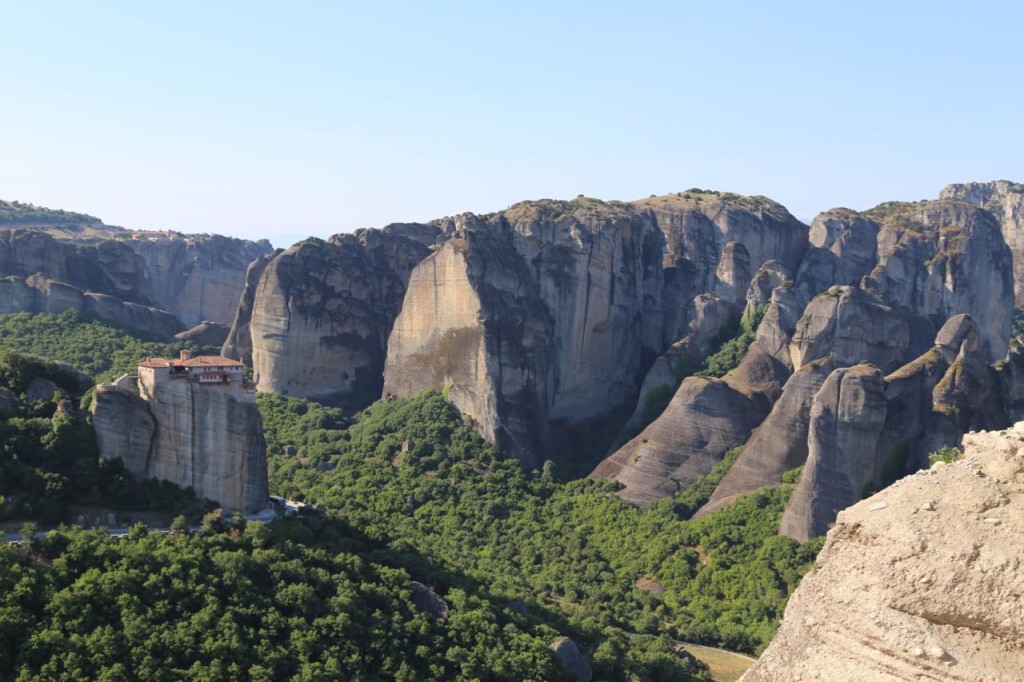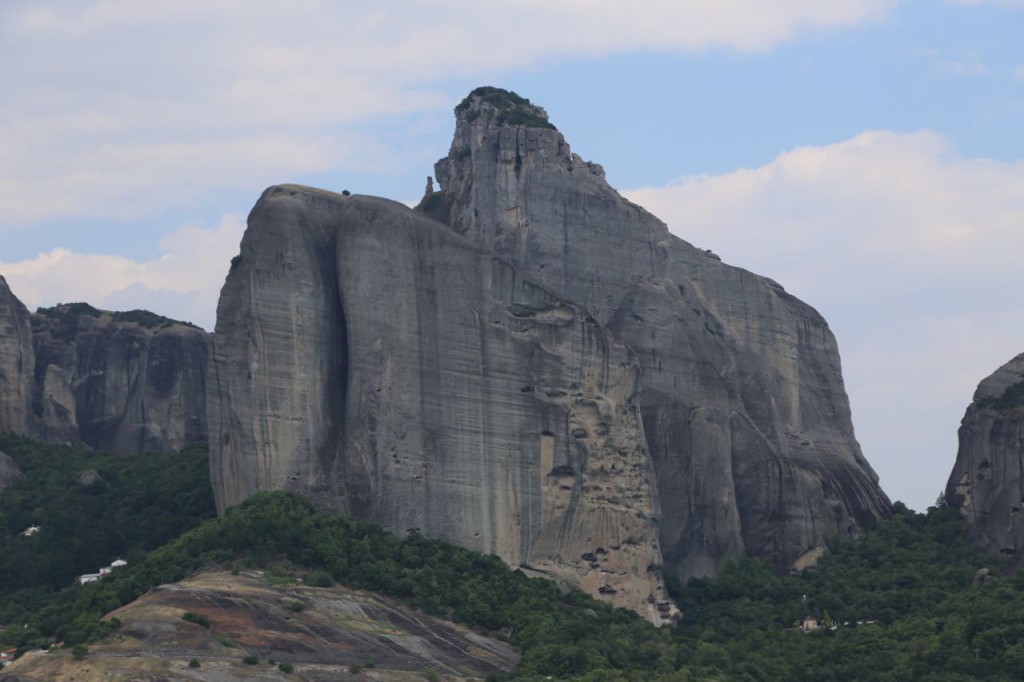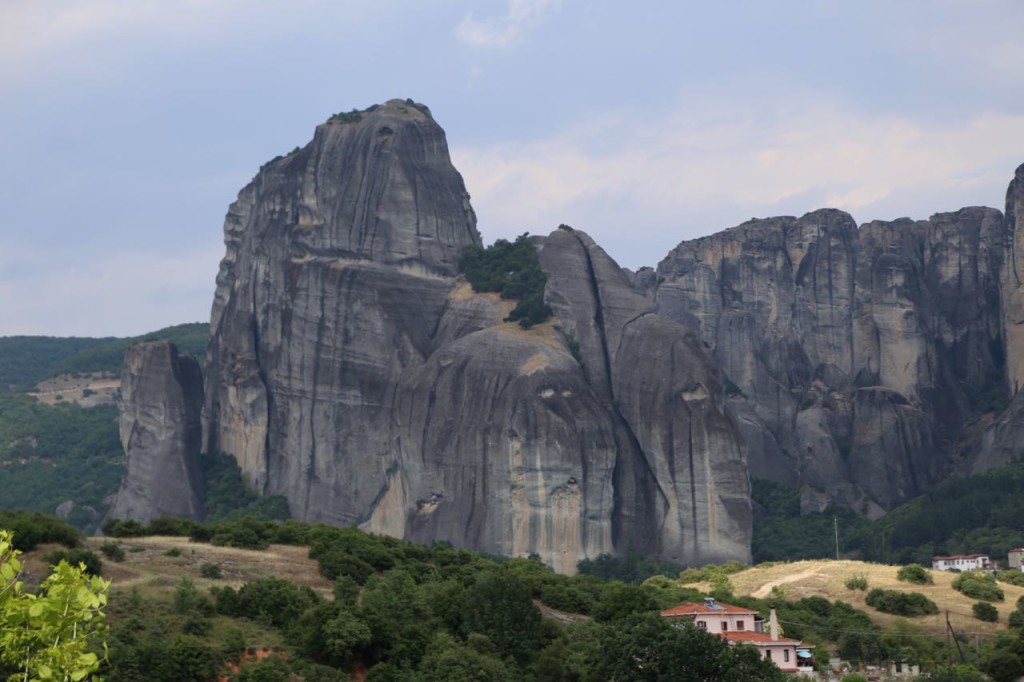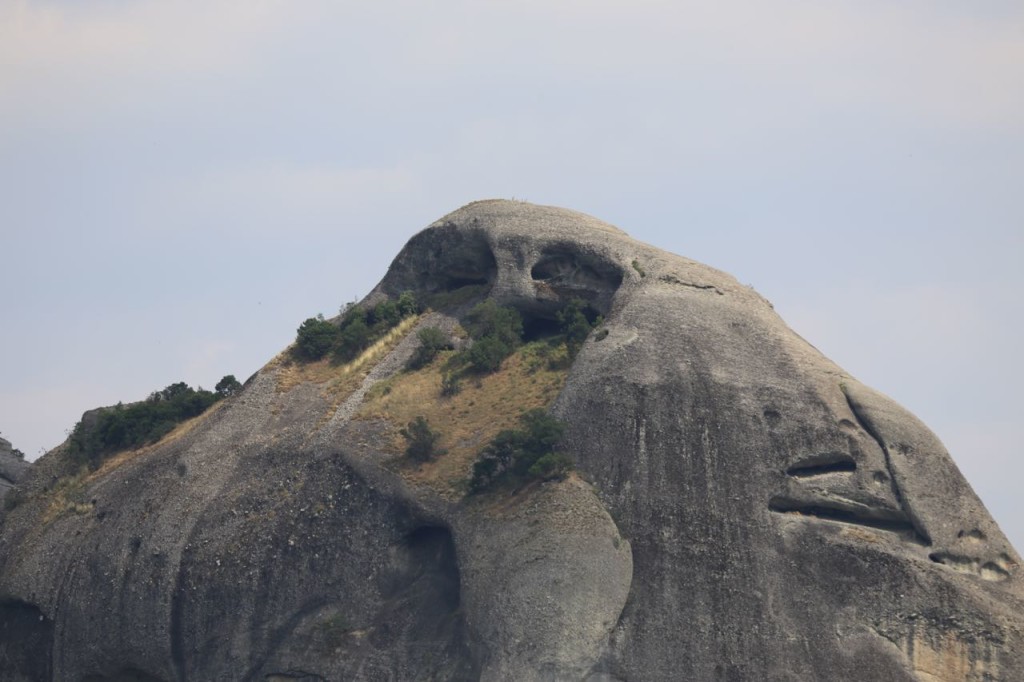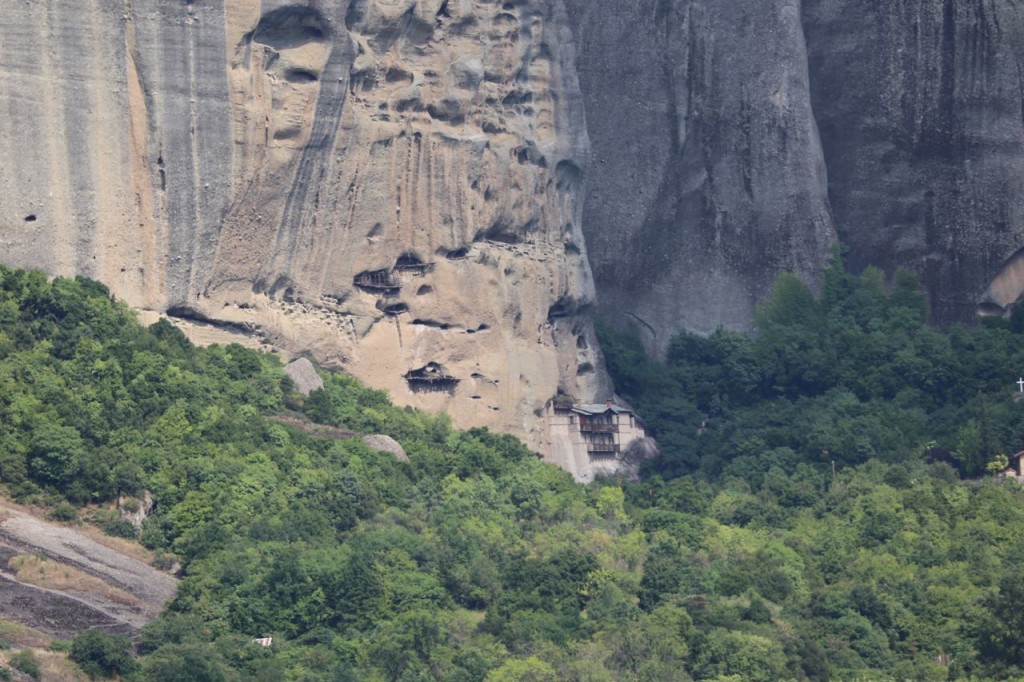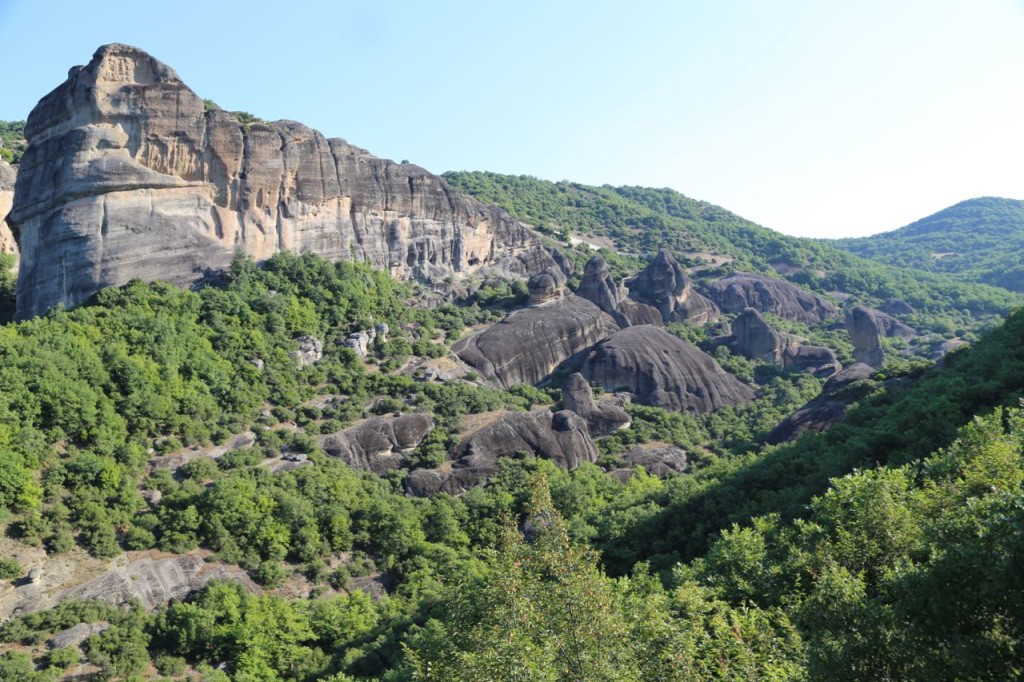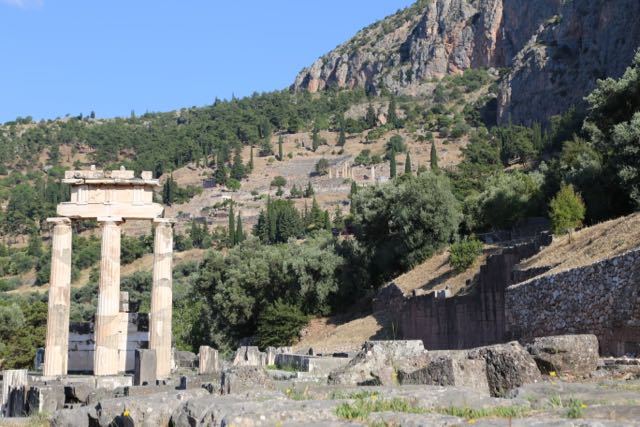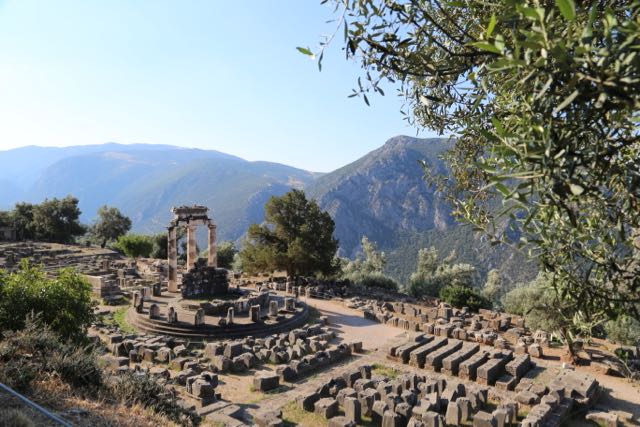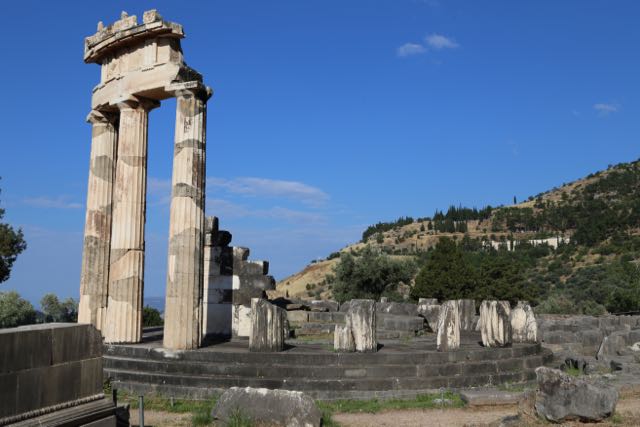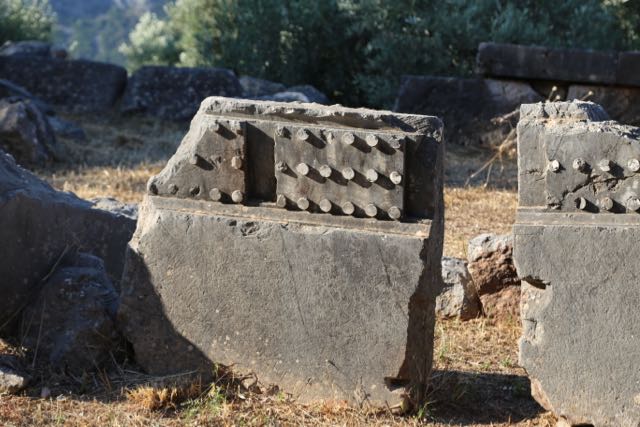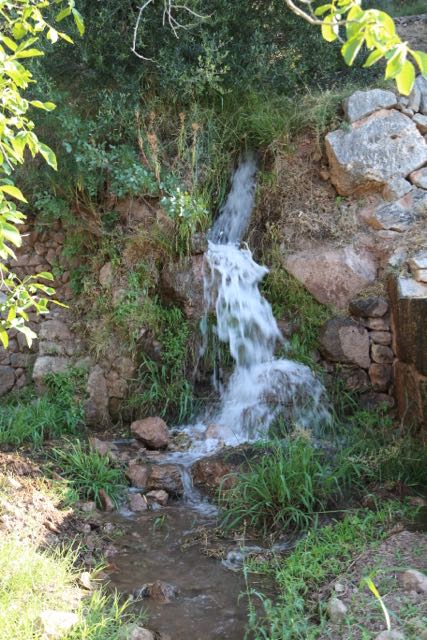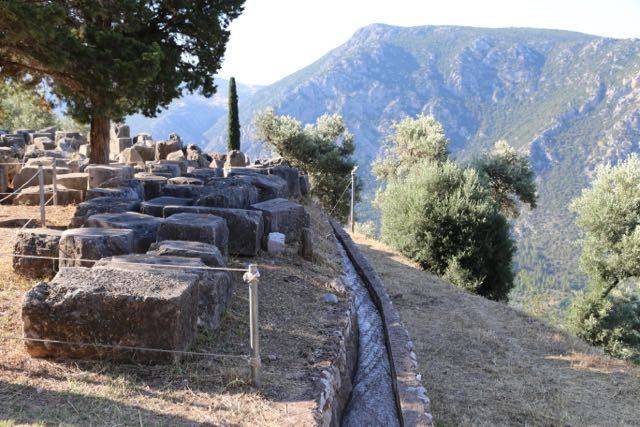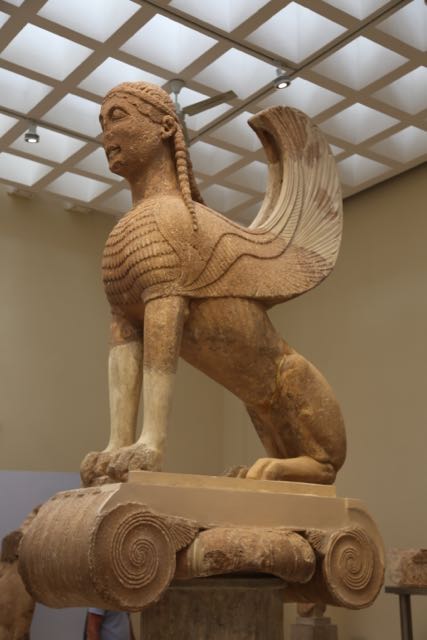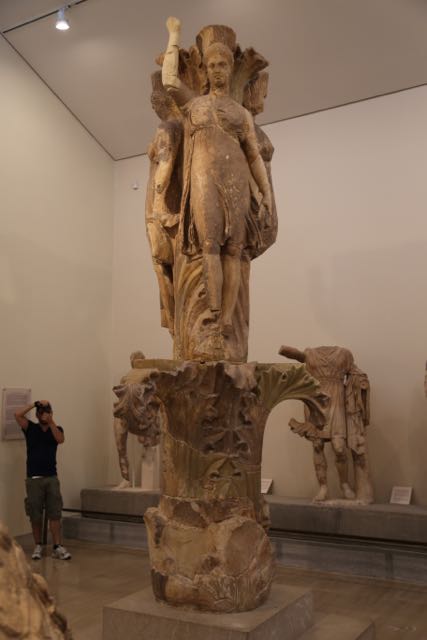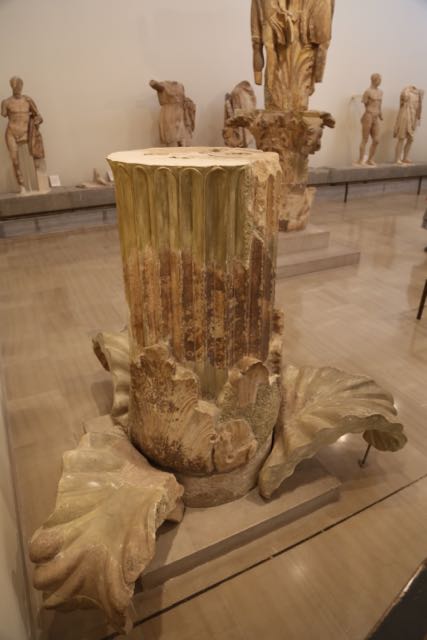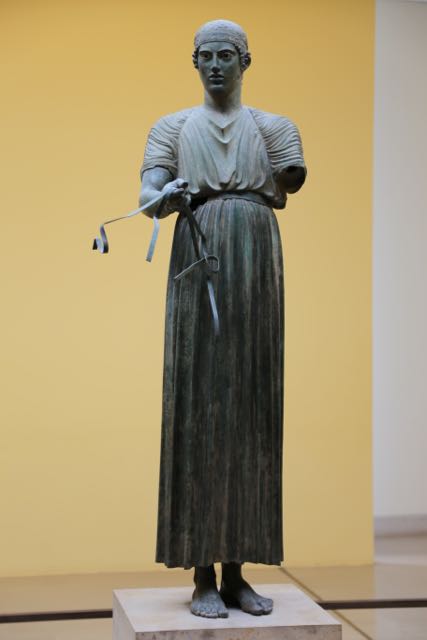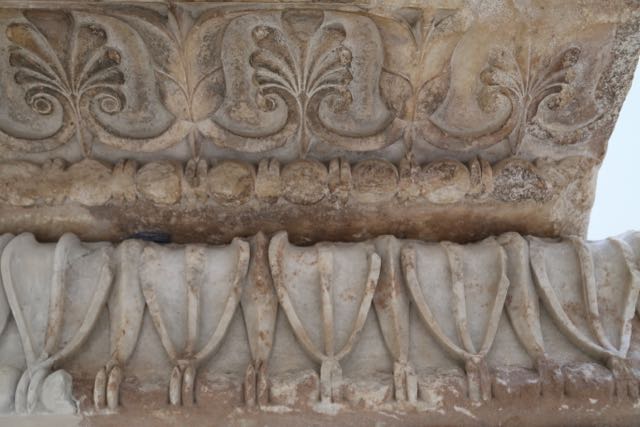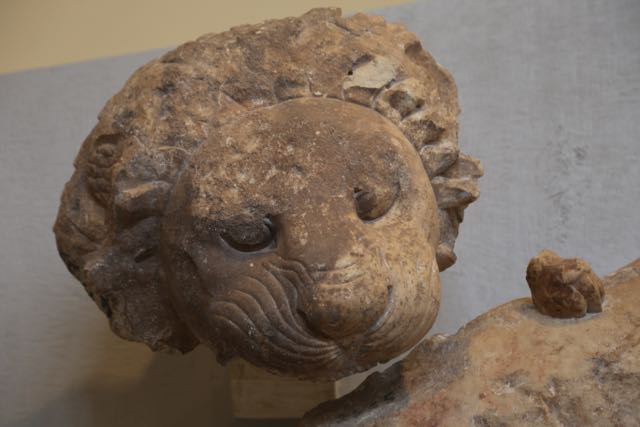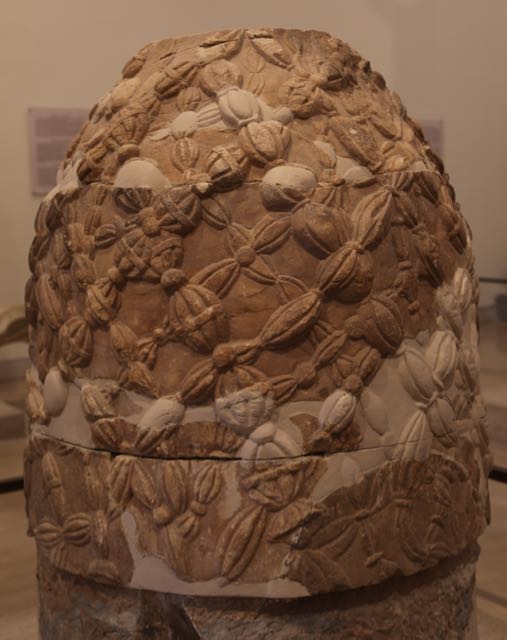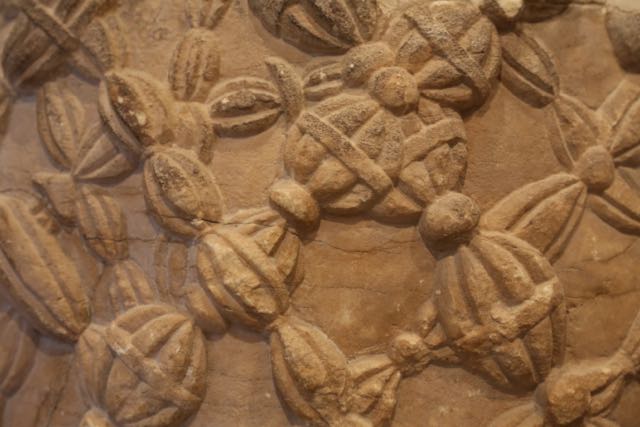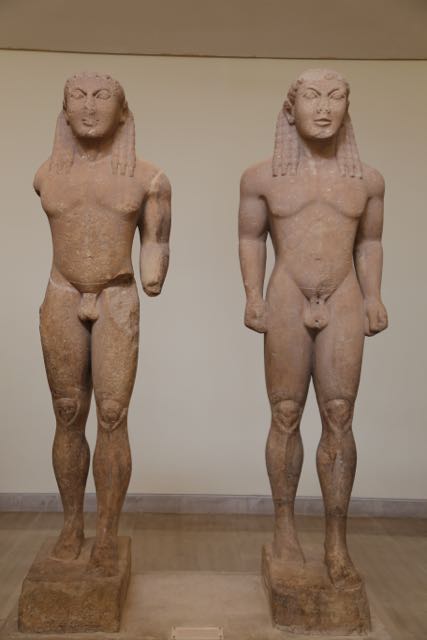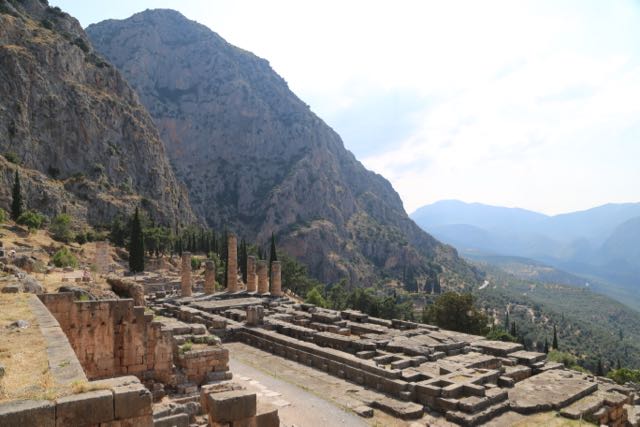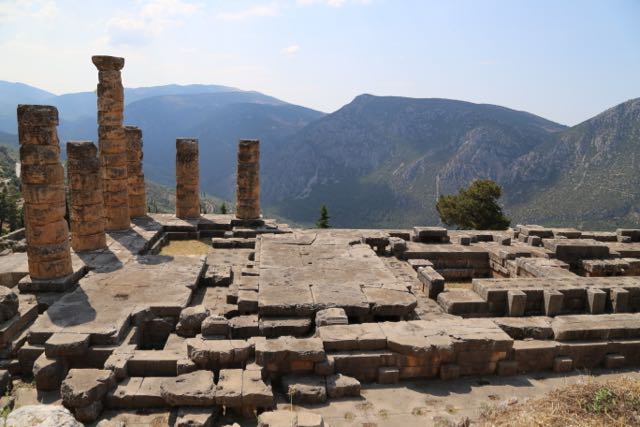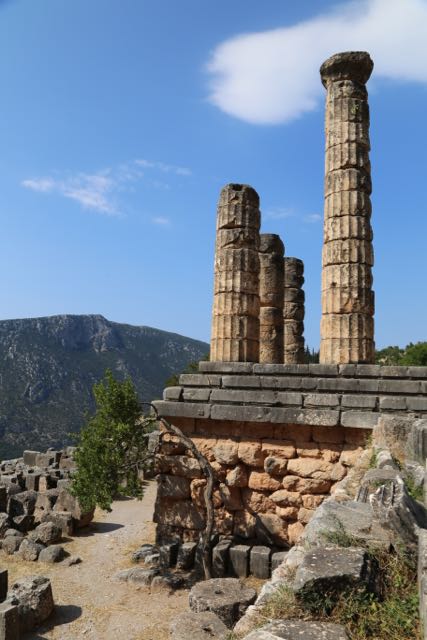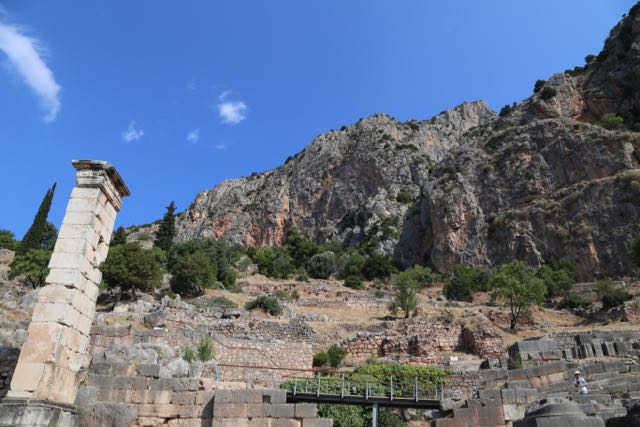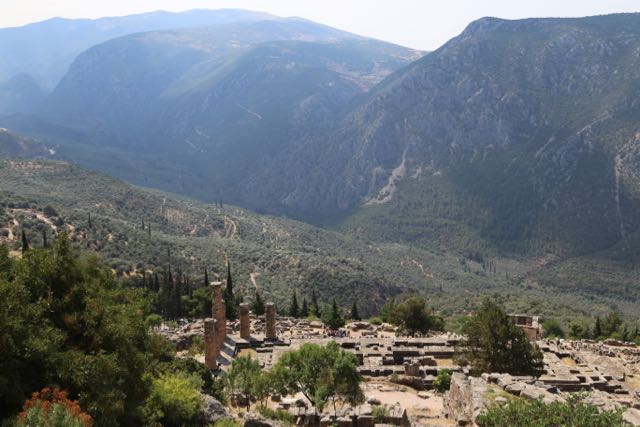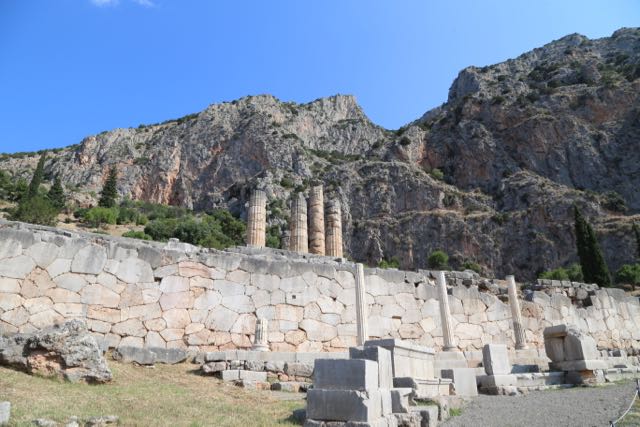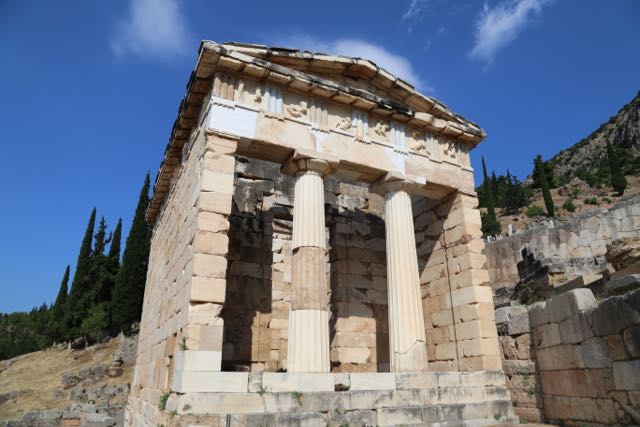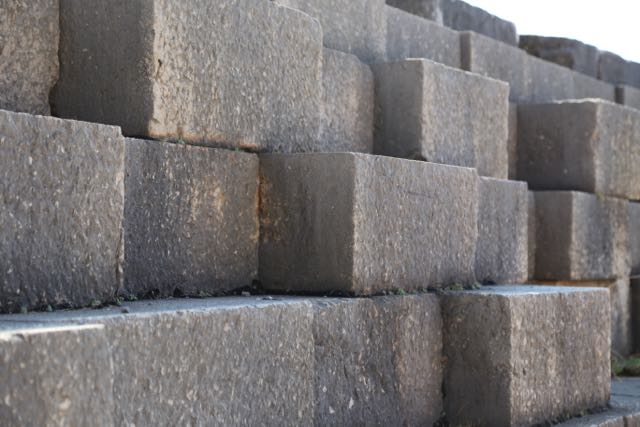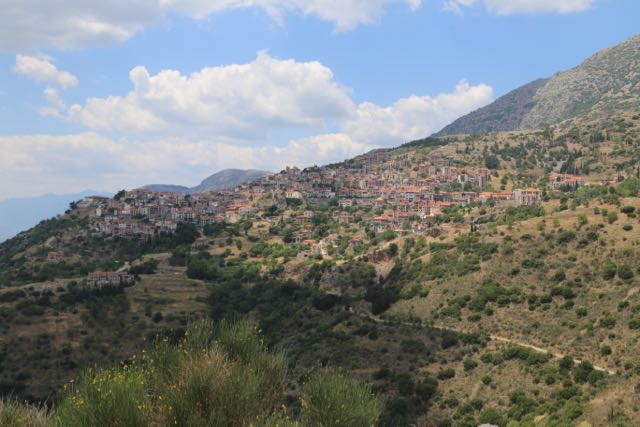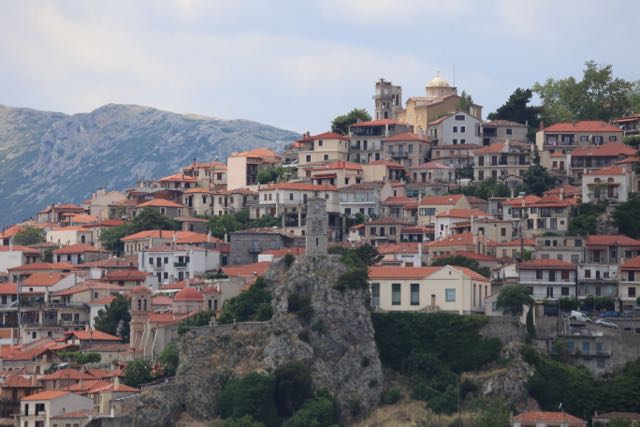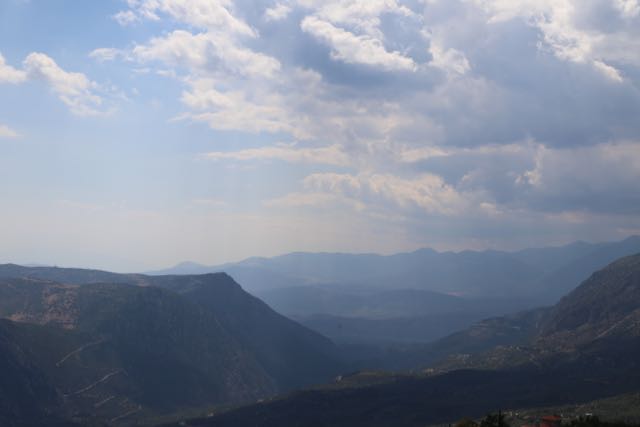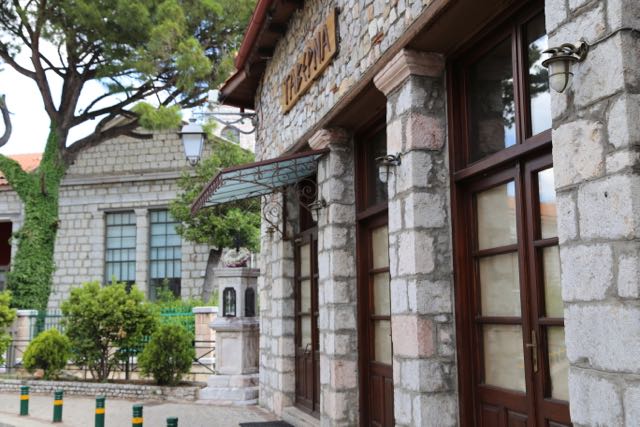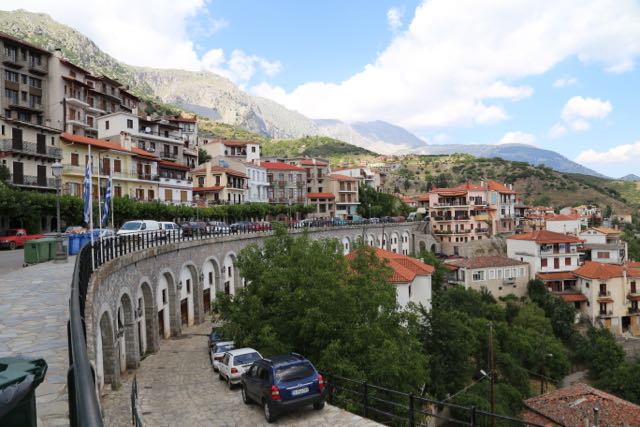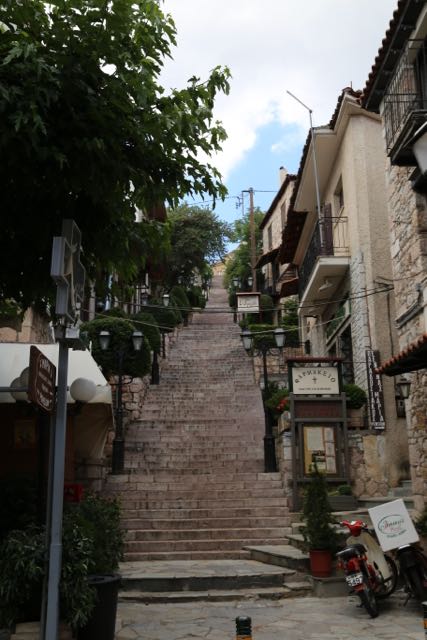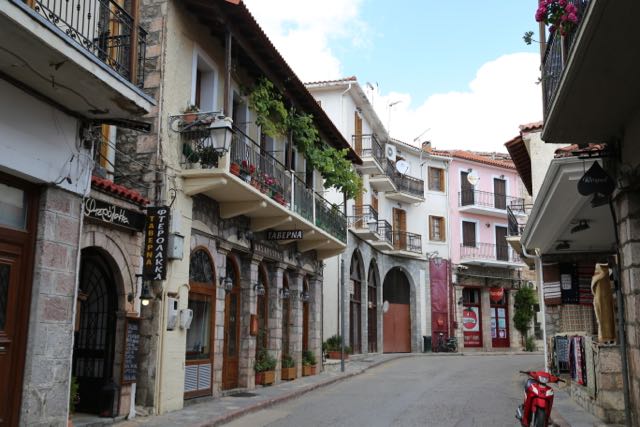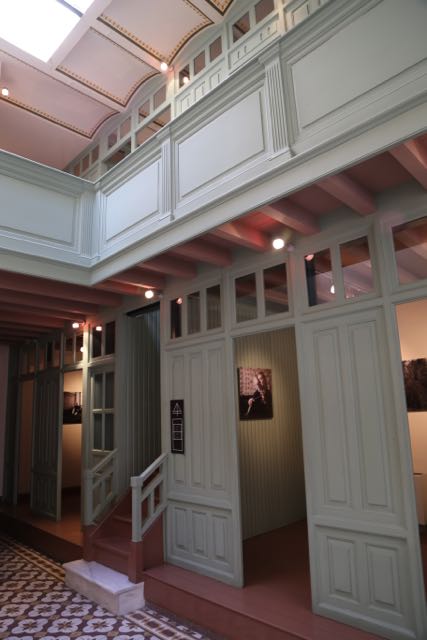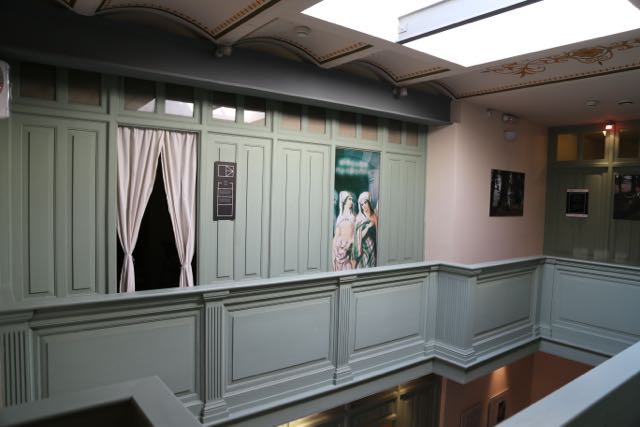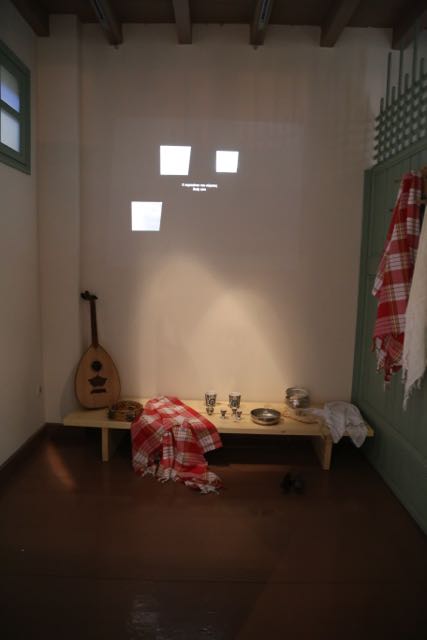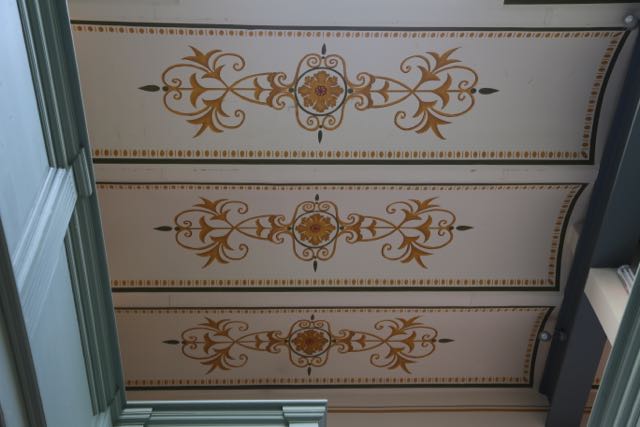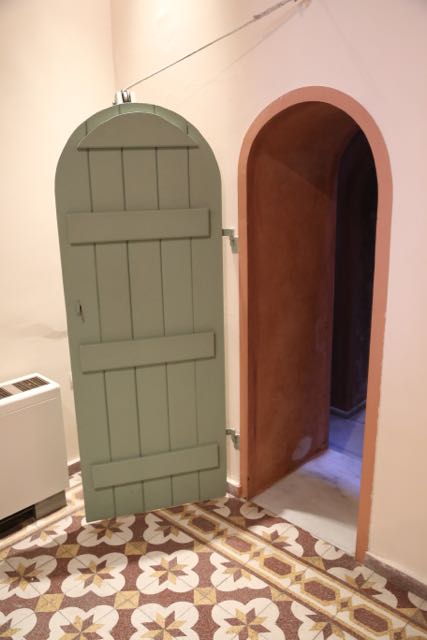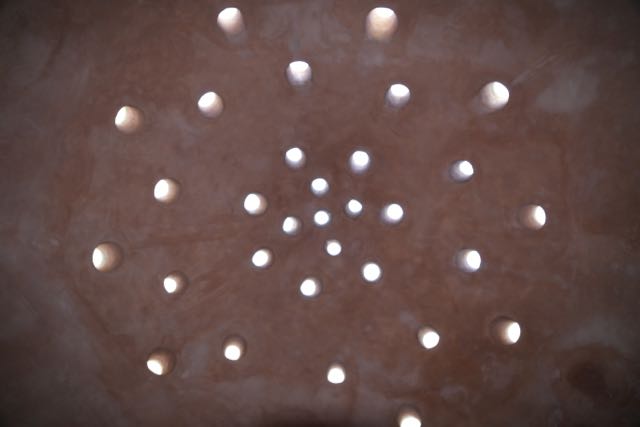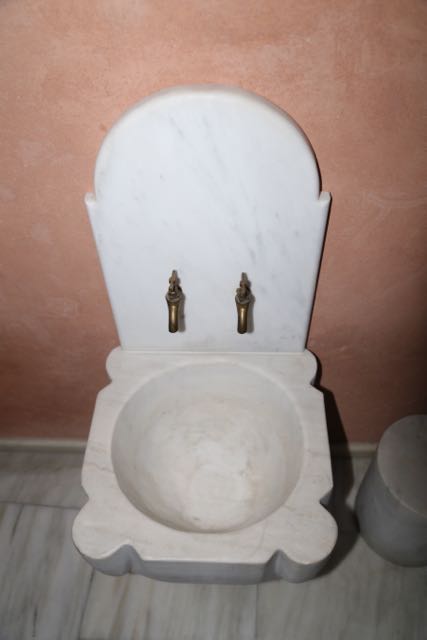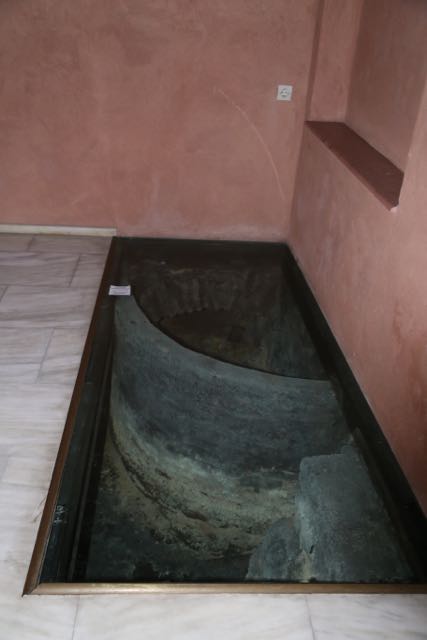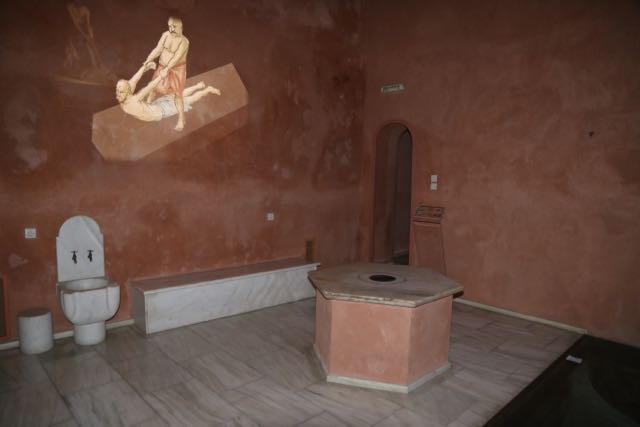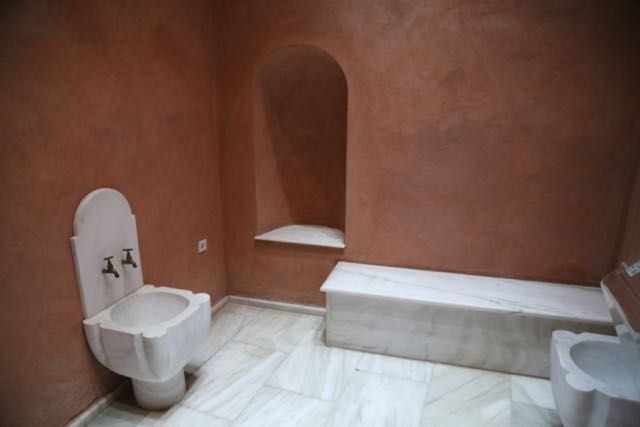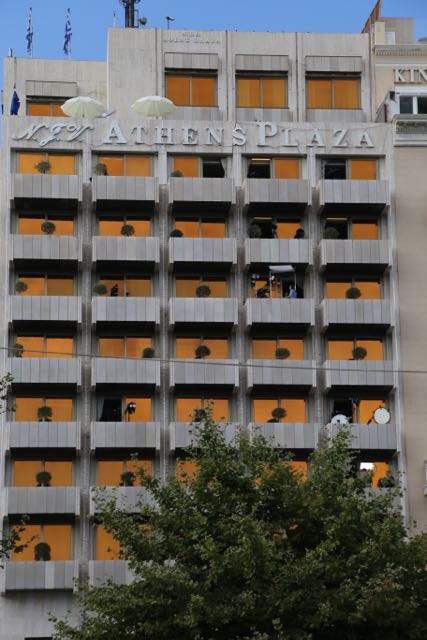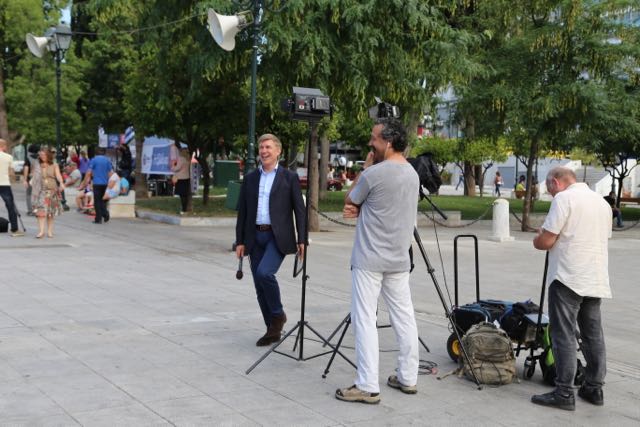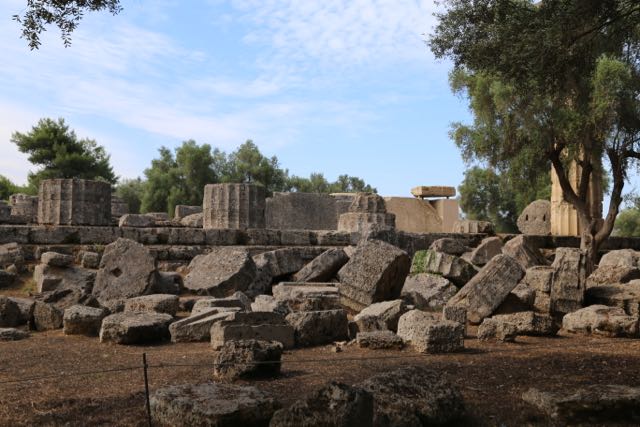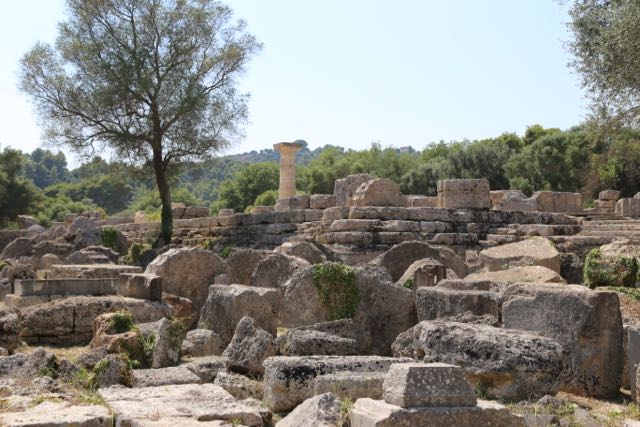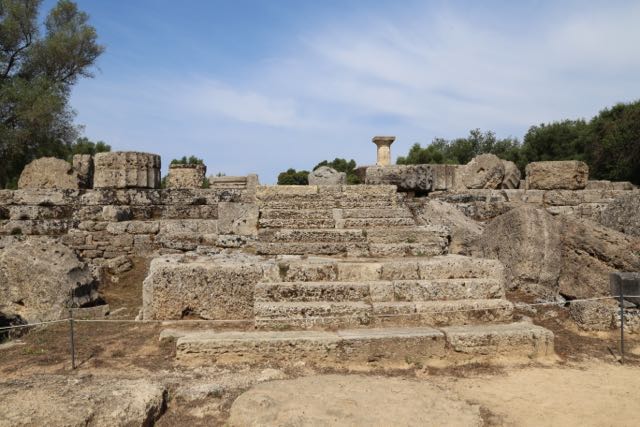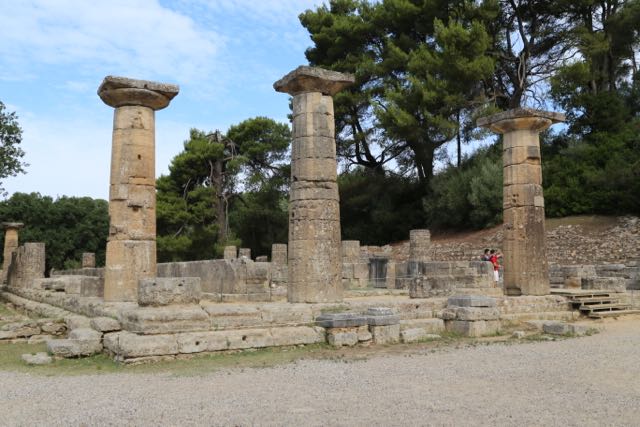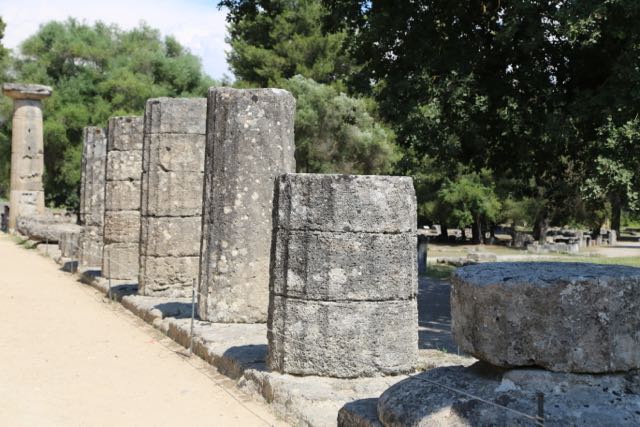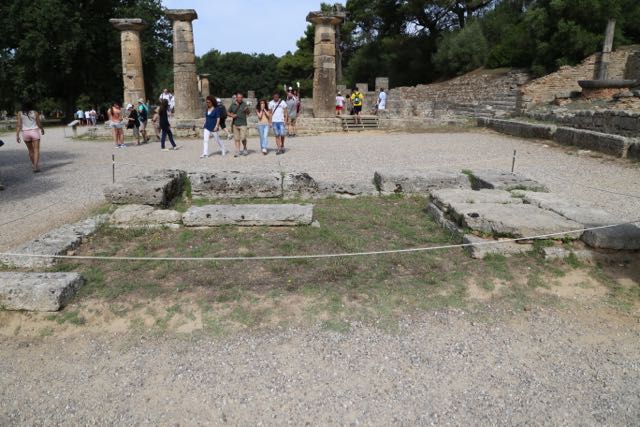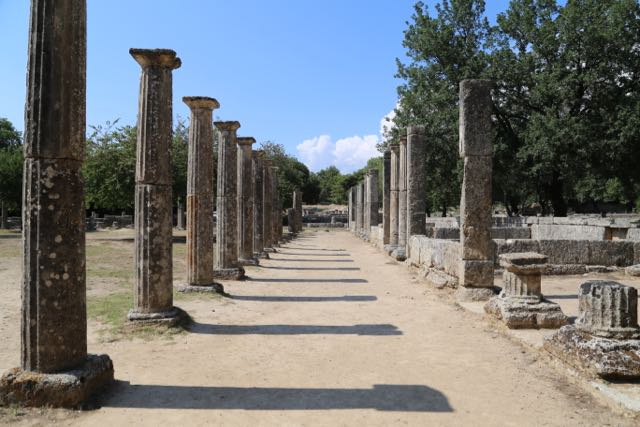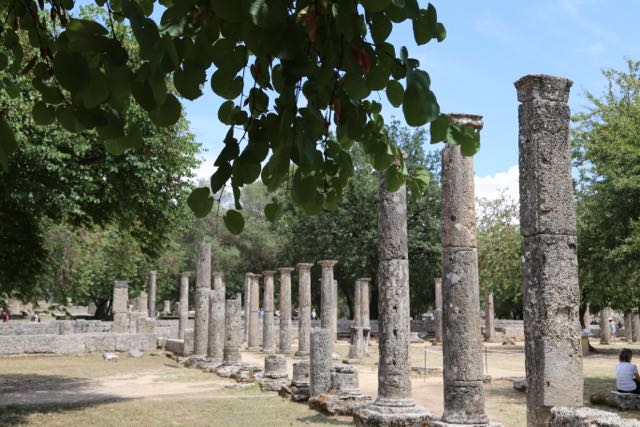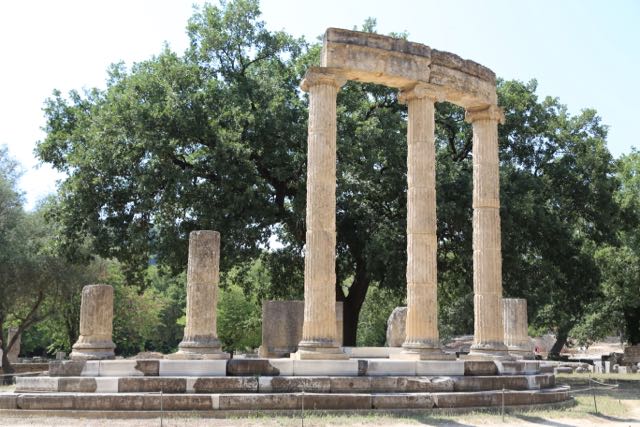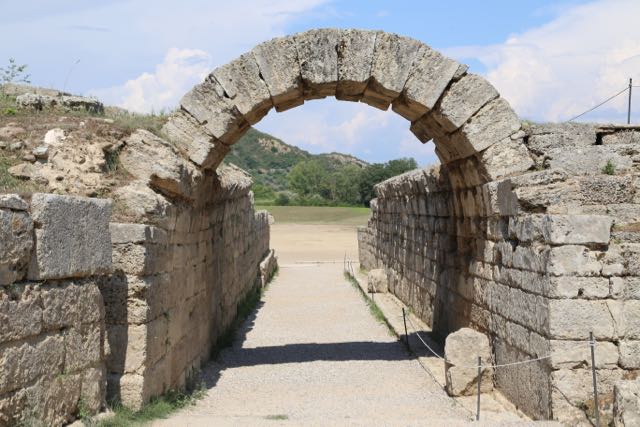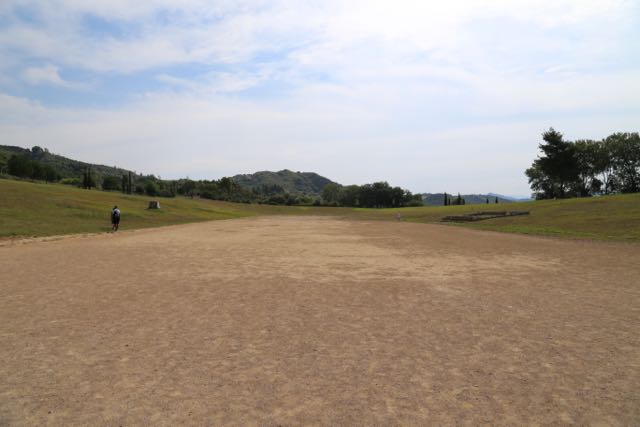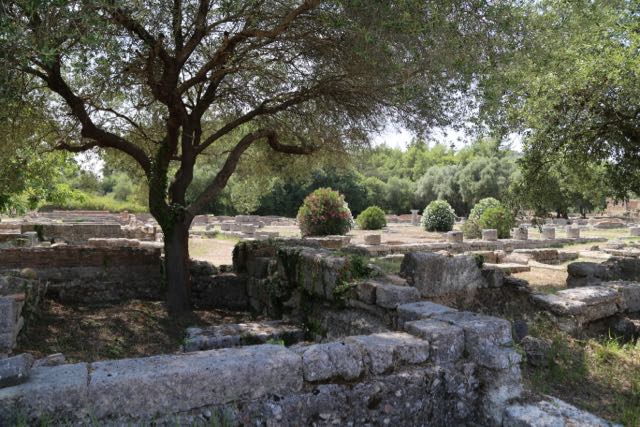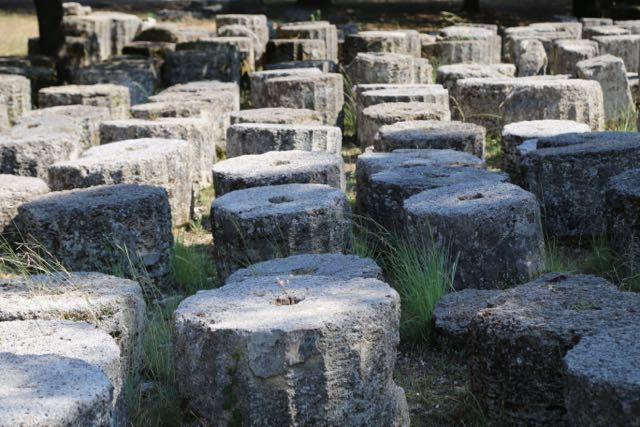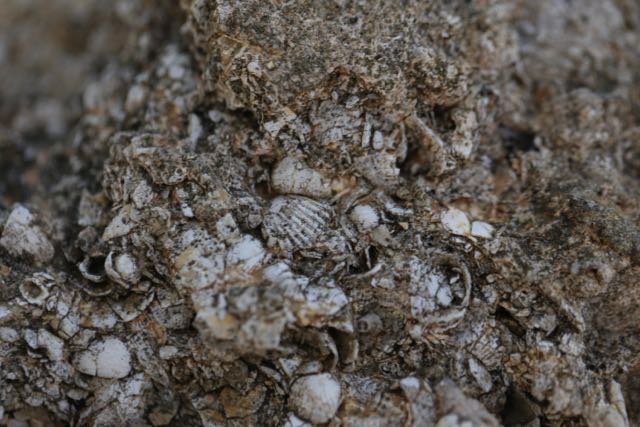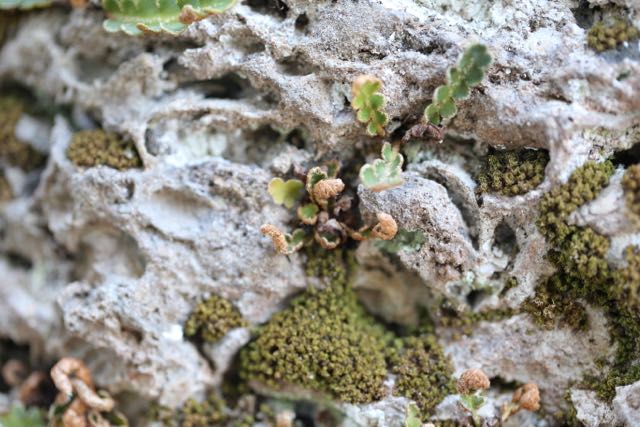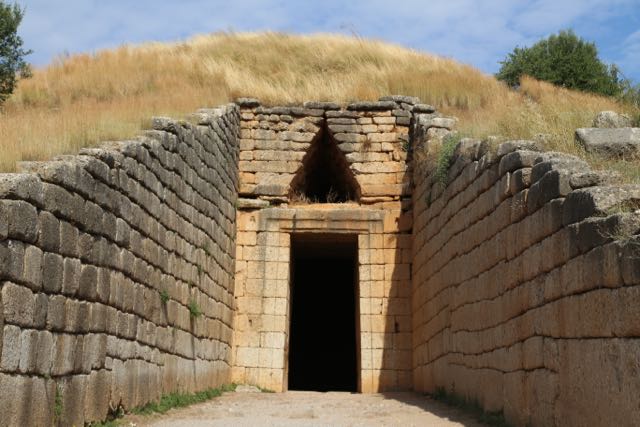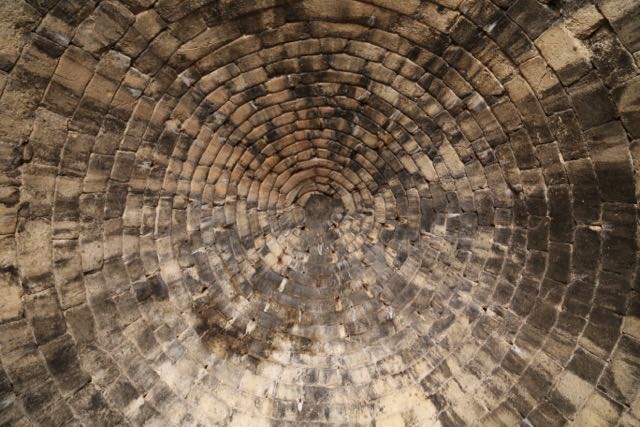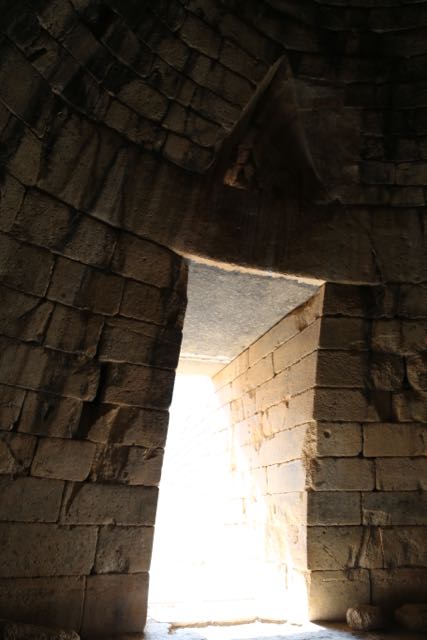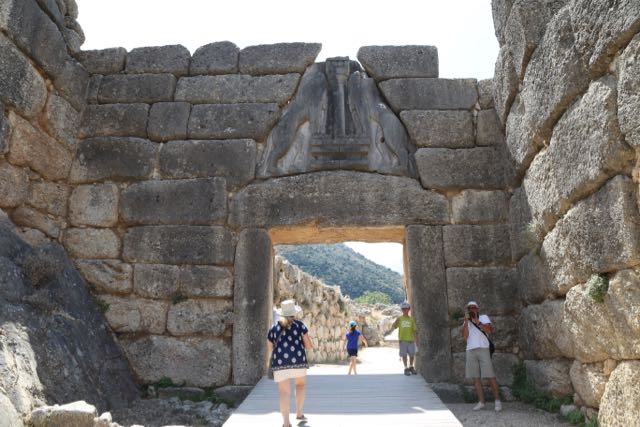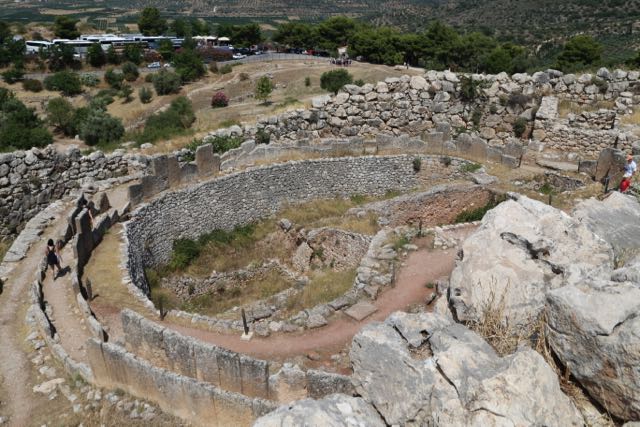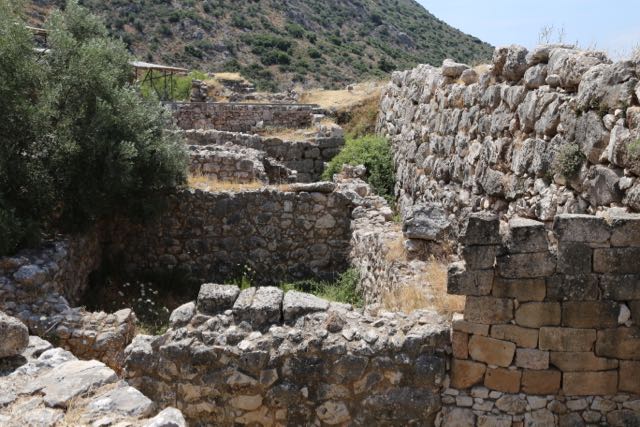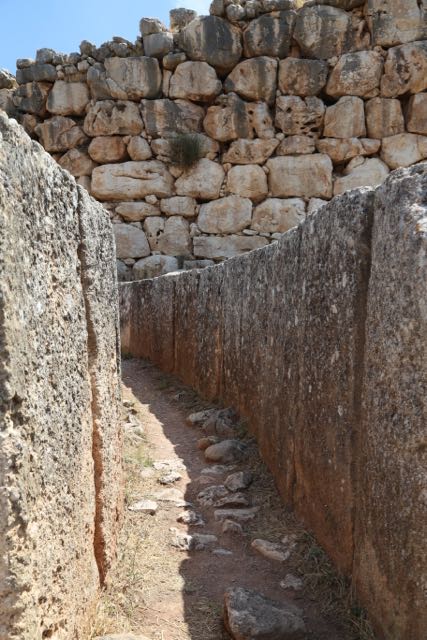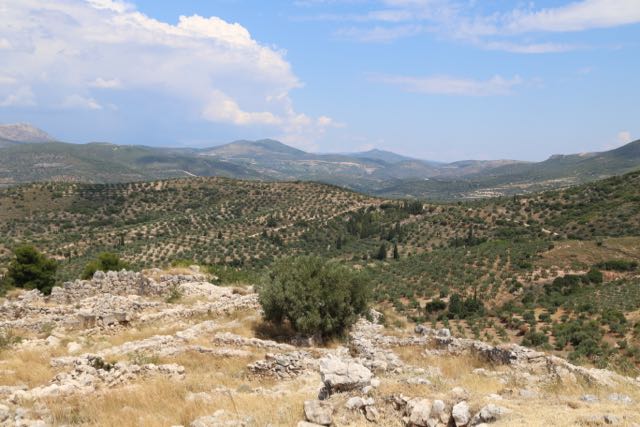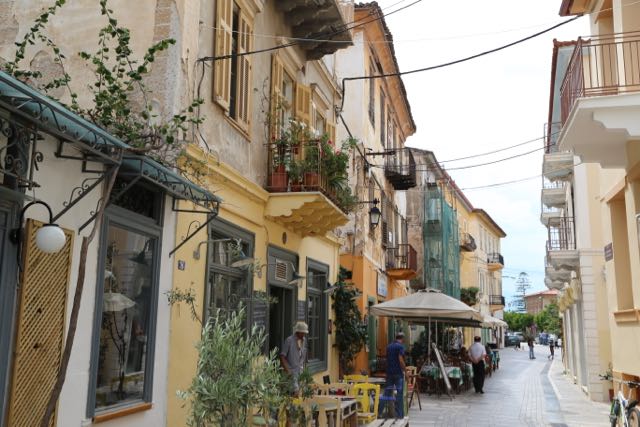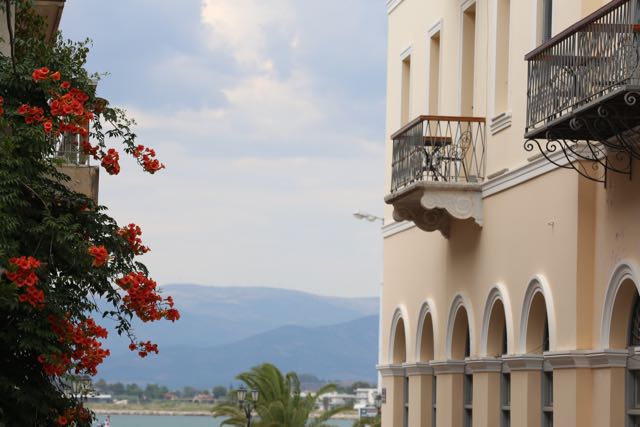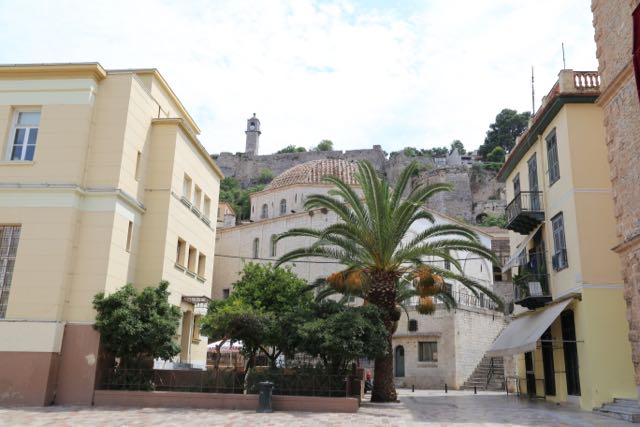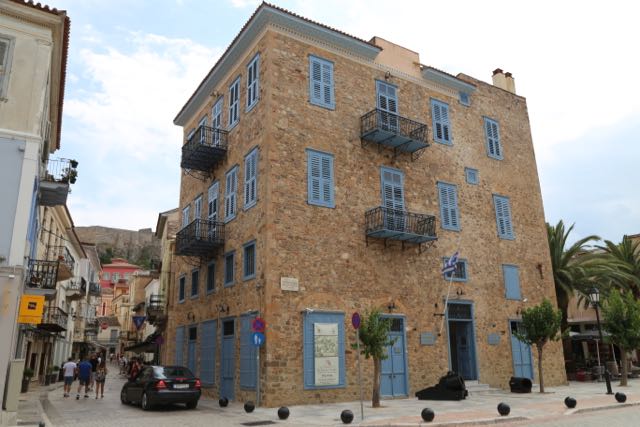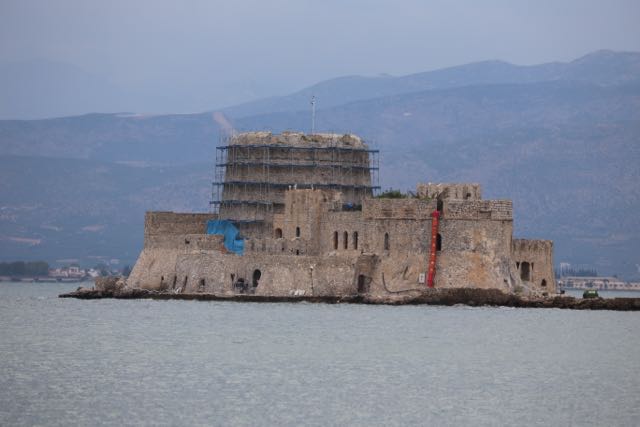Today we visited Meteora, an area in central Greece, of beautiful, amazing rock towers. They are composed of sedimentary rock, and the towers are for the most part bare rock. Portions of the towers have crevices that have been created from erosion. In the 9th century, monks sought refuge and solitude in the caves, and later, monasteries were built on top of several of the towers. Until the introduction of electricity, monks accessed the monasteries via ladders or a basket suspended via ropes, and evidently very strong will and stomachs. Now, those of us with not quite that strength, can visit the monasteries via roads and stairs.
Tag Archives: Greece
Greece: Athena Pronaia at Delphi
Right next to the Delphi archaeological site is the Sanctuary of Athena Pronaia. It is a much smaller site, and I am not sure if it is technically considered to be part of the Delphi site. The main ruins at the site are those of the Thosos, which is a round building. A neat feature at the site is a mountain spring that flows onto the site and is channeled away in a small stone canal.
Greece: Delphi Museum
After we visited the archaeological Delphi site, we visited the museum next door. All the artifacts are from the site, and there are some amazing pieces in it. The pieces are amazing and masterfully made. I also can’t get over the detail into some of the pieces, especially ones that were supposed to be on top of structure and thus never seen up close.
Greece: Delphi
Today we visited the archaeological site of Delphi. Delphi is definitely one of the most amazing archaeological sites to which I have ever been. It is not the biggest. Olympia and the Athens Acropolis are probably bigger, and both of them are very impressive. I think what I found so awe-inspiring about Delphi was not just the ruins, which are impressive, but also the setting. It is nestled into the mountains, and it reminds me of Machu Picchu. As an engineer, I haven’t stop being impressed with the construction of these sites, and at Delphi, I found the Polygonal Wall to be just amazing. Polygonal Wall is built of carved stones set on top each other without any mortar.
Greece: Arachova
Today we traveled to Arachova, a mountainous village set at the foot of Mt. Parnassós in Viotia, Southern Greece. It is mainly a resort town in the winter for the nearby ski slopes. The town reminds of me of a ski village in Colorado but the architecture more reminds me of Europe. It is a cute little village with wonderful views.
Greece: Athens Turkish Baths
I visited the Turkish Baths in Plaka today. I found out about them in Lonely Planet. I don’t think many tourists visit them because when I walked in around 8:30 the man at the desk looked surprised to see a visitor and had to turn on the lights in the place. The baths are really well restored 17th-century public bathhouse and a remnant of the Ottoman times. The only criticism I have is that more signage as to what you are looking at would have been really nice. They had pictures projected onto some of the walls that did help a little.
Greek Financial Crisis Media
Yesterday, my tour group came back to Athens before heading out again today. While in Athens, I walked over to Parliament and Syntagma Square, which is directly in front of Parliament. I saw zero protestors, but maybe they came later. I did however see lots of media, or more descriptively, lots of bored looking media. Here are a few photos of the media gathered around reporting or looking bored.
Greece: Olympia
Today we visited the ancient site of Olympia where the original Olympic games were held. The site is huge, and they are still uncovering it. The gymnasium is only partially uncovered with something like 80% still left to dig up. There were two different areas where people were working to uncover remains while I was there. There were so many structures that I got confused at times what was what structure. Then of course there also pieces lying around in what I am sure is some logical method to the archaeologists, but to most of us, it looks like column, foundation, or undetermined piece of stone lying about everywhere with no clue as to which building it belongs. Then there is the stadium, which is unmistakable as it is a huge open area surrounded by sloped grassy areas, where I like most people, felt the need to traverse the distance just to say I walked across the ancient Olympic Stadium. Many others raced each other down the length of it. The entire site is just really neat to explore. I also really started examining the limestone that was used to make the structures. Some of the stone has eroded enough that I could examine the shells in it. Other limestone was being eroded by plants, lichen, and moss, who clearly had no respect for the history of the stone.
Greece: Mycenae
Today we visited Mycenae, which includes both the Treasury of Atreus and Mycenae Acropolis. The Mycenaean civilization dates back to the 15th to 12th century B.C. The architecture is impressive and unique and includes the triangle structure as a predecessor to the arch. The Treasury looks like a giant beehive from the inside and is just amazing to stand inside. The Lion Gate is possibly the most impressive and certainly (to my untrained eye) the most unique structure at the Acropolis.
Greece: Nafplion
Our final stop of the day was Nafplion. It is a cute little town in the Peloponnese and was the first capital of the First Hellenic Republic and of the Kingdom of Greece after the Greek revolution from the Ottoman Empire. The view of the water and surrounding mountains is just beautiful. It also has views of the Palamidi castle and the Bourtzi that was used to guard the city from sea attack.

